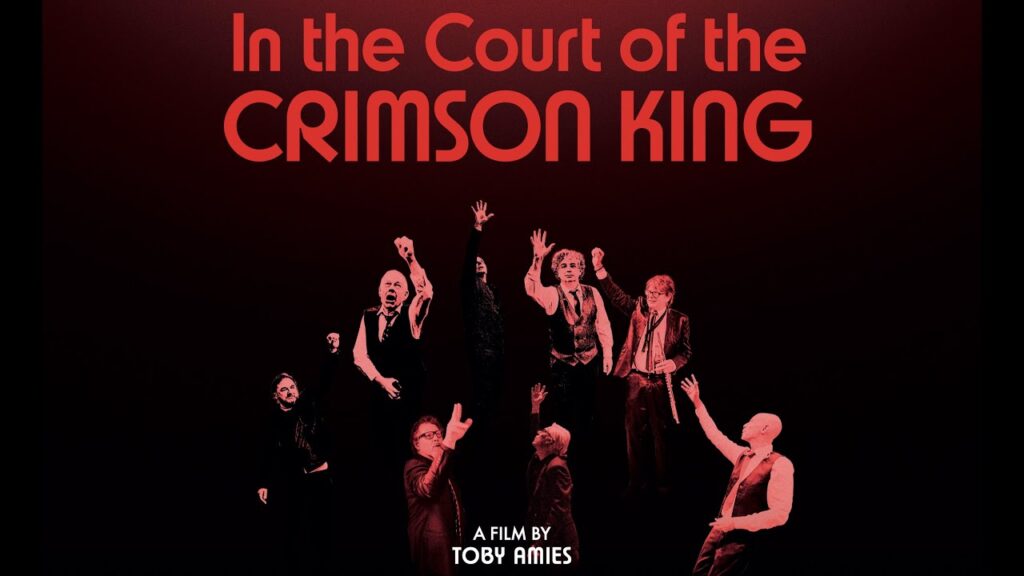*Reimagining the Court of the Crimson King* is an ambitious undertaking, and for any fan of progressive rock, particularly the iconic 1969 album *In the Court of the Crimson King* by King Crimson, such a project would inevitably provoke a mixture of excitement and trepidation. As one of the seminal albums in the genre, *In the Court of the Crimson King* occupies a sacred space in the world of music, so to approach it with the goal of reinterpreting or reimagining it is a formidable challenge.
King Crimson’s *In the Court of the Crimson King* is widely regarded as a watershed moment in the history of progressive rock, with its intricate arrangements, groundbreaking use of synthesizers, and poetic, sometimes cryptic lyrics. It introduced a fusion of rock, jazz, classical, and avant-garde elements in ways that had rarely been heard before, creating a soundscape that was both innovative and timeless. Its influence has reverberated across generations, inspiring musicians across genres.
The concept of *Reimagining the Court of the Crimson King* suggests an attempt to breathe new life into these legendary compositions. It could take many forms—whether that be reinterpretations of the original tracks in a modern context or complete rearrangements that deviate from the source material. Either way, it holds the potential to evoke both nostalgia for fans of the original album and curiosity from those unfamiliar with the work.
One of the most striking aspects of *In the Court of the Crimson King* is its atmosphere—its emotional depth and the way it weaves through a variety of moods, from the dramatic and sweeping to the subtle and introspective. The album’s centerpiece, “21st Century Schizoid Man,” is a chaotic, jazz-infused anthem that juxtaposes heavy distortion with intricate melodies. Its hard-edged, yet exploratory nature exemplifies the fusion of genre and mood that makes King Crimson’s music so unique. Reimagining this piece, particularly in a modern context, could be fascinating—especially if the reinterpreters chose to explore electronic textures, digital manipulation, or more avant-garde approaches to instrumentation.
The centerpiece of *Reimagining the Court of the Crimson King*, however, would have to be how the project handles the album’s larger-than-life nature. Many progressive rock albums, including King Crimson’s own work, tend to be quite self-serious, with an emphasis on artistic expression and emotional gravitas. There’s a certain larger-than-life, almost mythic quality to the original album, from the deep philosophical musings of the lyrics to the boldness of the compositions themselves. Reinterpreting that—whether to highlight the absurdity, irony, or sheer intensity of these tracks—would require a balance of both reverence and innovation. A purely faithful reimagining would likely fall flat, while too radical a departure from the original could risk alienating long-time fans.
Another important factor to consider is the musical evolution that has taken place since the album’s release. King Crimson’s 1969 recordings were groundbreaking for their time, and modern listeners may be more attuned to different textures and production techniques. With advances in technology, sound design, and musical exploration, *Reimagining the Court of the Crimson King* has an opportunity to incorporate these innovations in a way that could enhance the album’s original ideas. However, it would also need to maintain the organic interplay between the band members that made the original so compelling. The use of digital effects, synthesizers, or modern recording techniques could present an interesting challenge for the project—how do you modernize something without losing the essence that made it so groundbreaking in the first place?
One potential concern with reimaginings of legendary works is the danger of reducing the original to mere homage. *In the Court of the Crimson King*’s status as a landmark in progressive rock means that any reinterpretation will inevitably be measured against its formidable legacy. If the reimagining takes the form of an update for the sake of modernization, rather than a truly innovative retelling of the album, it risks becoming just another “cover” album. The project would need to offer something fresh, whether in the form of new instrumentation, a fresh approach to arrangement, or an entirely new perspective on the themes of the album.
At the same time, one of the benefits of such a reimagining is the potential to reach a new generation of listeners. King Crimson’s music, while enduring, is often associated with a very specific era. A reinterpretation could introduce the album’s beauty and complexity to younger audiences who may not immediately connect with the original’s 1969 production or context. If done with care, such a reimagining could serve as a bridge between past and present, honoring the source material while offering something that resonates with modern sensibilities.
In conclusion, *Reimagining the Court of the Crimson King* is a bold and intriguing project, one that will undoubtedly stir strong reactions among listeners, from enthusiastic support to wary skepticism. The core challenge lies in finding the balance between honoring the original’s groundbreaking vision while pushing it forward into new territory. If the reimagining can retain the spirit of innovation and emotional depth that made King Crimson’s work so influential, it has the potential to be an exciting and rewarding exploration of one of progressive rock’s most enduring masterpieces.

